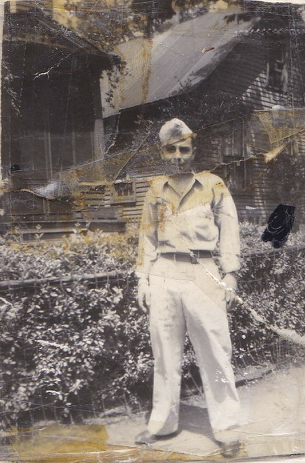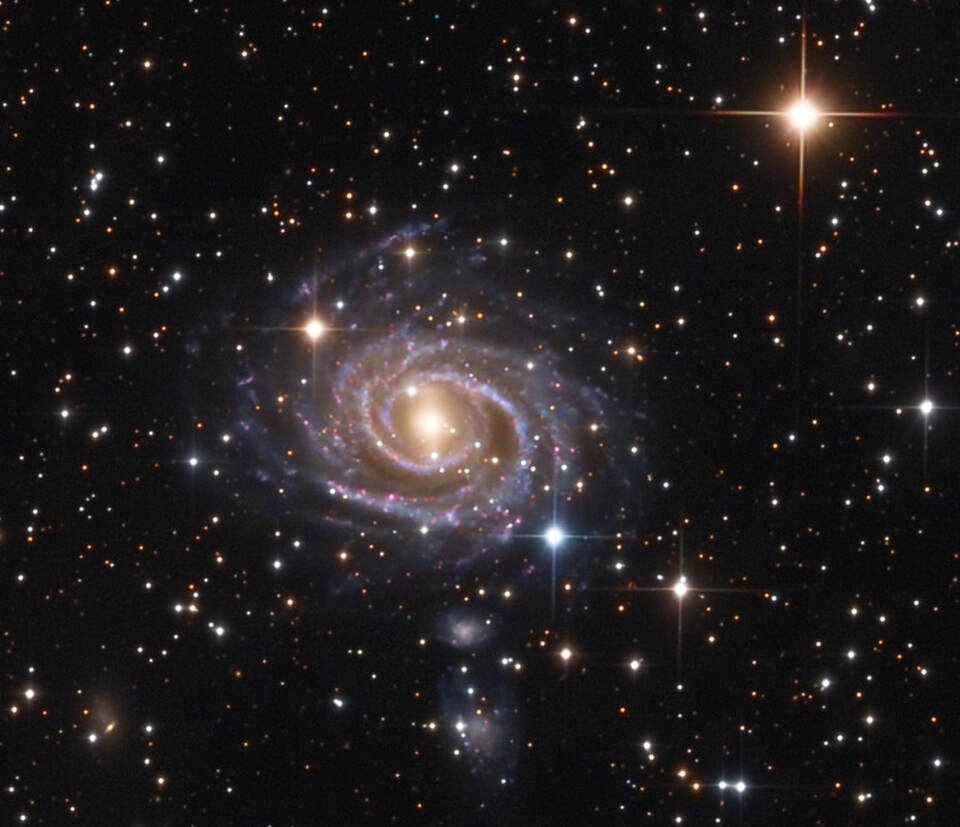Blog
Lafayette Leake (June 1, 1919 – August 14, 1990) was an American blues and jazz pianist, organist, vocalist and composer who played for Chess Recordsas a session musician, and as a member of the Big Three Trio, during the formative years of Chicago blues. He played piano on many of Chuck Berry‘s recordings.
Leake was born in Winona, Missouri, United States, in 1919. Information about his early years is sparse, but in the early 1950s he joined the Big Three Trio (replacing Leonard Caston) and began his association with Chess Records, where he worked closely with bassist, producer, and songwriter Willie Dixon.
Leake played piano on One Dozen Berrys, Chuck Berry’s second album, released in 1958 by Chess. He was then on Chuck Berry Is on Top; Leake (not Berry’s longtime bandmate Johnnie Johnson) played the prominent piano on the classic original rendition of “Johnny B. Goode“, as well as “Rock and Roll Music“. Leake played on numerous other Chess sessions from the 1950s through the 1970s, backing many Chess musicians, including Sonny Boy Williamson, Otis Rush, Junior Wells, and Little Walter. Leake gave Chicago blues musician Harmonica Hinds his first harmonica lesson on the street in Toronto, Ontario.
more...Honoring my dad Mike Labriola who served our country in WWII stationed back in his homeland Italy.

This image features the spiral galaxy NGC 691, imaged in fantastic detail by Hubble’s Wide Field Camera 3 (WFC3). This galaxy is the eponymous member of the NGC 691 galaxy group, a group of gravitationally bound galaxies that lie about 120 million light-years from Earth. Objects such as NGC 691 are observed by Hubble using a range of filters. Each filter only allows certain wavelengths of light to reach Hubble’s WFC3. The images collected using different filters are then coloured by specialised visual artists who can make informed choices about which colour best corresponds to which filter. By combining the coloured images from individual filters, a full-colour image of the astronomical object can be recreated. In this way, we can get remarkably good insight into the nature and appearance of these objects.

John Henry Bonham (31 May 1948 – 25 September 1980) was an English musician and songwriter, best known as the drummer for the English rock band Led Zeppelin. Esteemed for his speed, power, fast single-footed kick drumming, distinctive sound, and feel for the groove, he is regarded as one of the greatest and most influential rock drummers in history.
Bonham was born in 1948 in Redditch, Worcestershire, and took up drums at the age of five, receiving a snare drum at the age of 10 and a full drum set at the age of 15. He played with multiple local bands both at school and following school, eventually playing in two different bands with Robert Plant. Following the demise of the Yardbirds in 1968, Bonham joined Plant, guitarist Jimmy Page and bassist John Paul Jones to form Led Zeppelin. With the band, Bonham mostly showcased a hard-hitting hard rock style, but also handled funk and Latin-influenced grooves in later releases. Like Keith Moon of the Who, Bonham’s drum set grew in size following the band’s 1969 concert tours, including congas or timpani and a gong. His drum solo, “Moby Dick“, was featured on the group’s second album and was a staple of their concerts, often lasting over 20 minutes. Outside of Led Zeppelin, Bonham played drums for other artists, including the Family Dogg, Screaming Lord Sutch, Lulu, Jimmy Stevens and Wings. Bonham played with Led Zeppelin until his death at the age of 32, in September 1980 following a day of heavy drinking. The surviving members disbanded the group out of respect for Bonham after his death.
A mostly self-taught drummer, Bonham’s influences included Max Roach, Gene Krupa and Buddy Rich. Bonham was also close with Vanilla Fudgedrummer Carmine Appice, who introduced him to Ludwig drums. While primarily known for his hard rock style during his lifetime, Bonham’s reputation as a drummer has grown beyond hard rock following his death; he is now seen as one of the greatest drummers of all time. He has influenced numerous drummers, including Dave Grohl, Chad Smith, Dave Lombardo and Mike Portnoy. He was posthumously inducted into the Rock and Roll Hall of Fame in 1995 as a member of Led Zeppelin. In 2016, Rolling Stone ranked him first in its list of the “100 Greatest Drummers of All Time”.
more...Louis Hayes (born May 31, 1937) is an American jazz drummer and band leader. He was with McCoy Tyner‘s trio for more than three years. Since 1989 he has led his own band, and together with Vincent Herring formed the Cannonball Legacy Band.
Louis Sedell Hayes was born to a father, an automaker, who played drums and piano.His mother waited tables and played the piano. Hayes got his first drum set at age 10. The key influence in his early development was his cousin Clarence Stamps, an accomplished drummer who grounded his technical fundamentals and gave him lessons that stuck for life. He refers to the early influence of hearing jazz, especially big bands on the radio. His main influence was Philly Joe Jones[2] and he was mentored by Jo Jones. His three main associations were with Horace Silver‘s Quintet (1956–59), the Cannonball Adderley Quintet (1959–65), and the Oscar Peterson Trio (1965–67). Hayes often joined Sam Jones, both with Adderley and Peterson, and in freelance settings.
When he was a teenager, he led a band in Detroit clubs before he was 16. He worked with Yusef Lateef and Curtis Fuller from 1955 to 1956. He moved to New York in August 1956 to replace Art Taylor in the Horace Silver Quintet and in 1959 joined the Cannonball Adderley Quintet, with which he remained until mid-1965, when he succeeded Ed Thigpen in the Oscar Peterson Trio. He left Peterson in 1967, and formed a series of groups, which he led alone or with others; among his sidemen were Freddie Hubbard, Joe Henderson, Kenny Barron, and James Spaulding. He returned to Peterson in 1971.
https://www.youtube.com/watch?v=hZD0YRMZMws
more...Albert “Tootie” Heath (born May 31, 1935) is an American jazz hard bop drummer, the brother of tenor saxophonist Jimmy Heath and the double-bassist Percy Heath.
Born in Philadelphia, Pennsylvania, he first recorded in 1957 with John Coltrane. From 1958 to 1974 he worked with, among others, J. J. Johnson, Wes Montgomery, Art Farmer and Benny Golson‘s Jazztet, Cedar Walton, Bobby Timmons, Kenny Drew, Sonny Rollins, Dexter Gordon, Johnny Griffin, Herbie Hancock, Friedrich Gulda, Nina Simone, and Yusef Lateef. In 1975, he, Jimmy and Percy formed the Heath Brothers. He remained with the group until 1978, then left to freelance. He has recorded extensively throughout his career.
Among his many workshop and classroom teaching assignments, Tootie Heath is a regular instructor at the Stanford Jazz Workshop.
Tootie Heath is now the producer and leader of The Whole Drum Truth, a jazz drum ensemble featuring Ben Riley, Ed Thigpen, Jackie Williams, Billy Hart, Charlie Persip, Leroy Williams and Louis Hayes.
https://www.youtube.com/watch?v=n374oQKxb3I
more...Akira Ifukube (伊福部 昭, Ifukube Akira, 31 May 1914 – 8 February 2006) was a Japanese classical and film music composer, best known for his works on the Godzilla franchise.
Akira Ifukube was born on 31 May 1914 in Kushiro, Japan as the third son of a police officer Toshimitsu Ifukube. The origins of this family can be traced back to at least the 7th century with the birth of Ifukibe-no-Tokotarihime. He was strongly influenced by the Ainu music as he spent his childhood (from age of 9 to 12) in Otofuke near Obihiro, where was with a mixed population of Ainu and Japanese. His first encounter with classical music occurred when attending secondary school in Sapporo city. Ifukube decided to become a composer at the age of 14 after hearing a radio performance of Igor Stravinsky‘s The Rite of Spring, also cited the music of Manuel de Falla as a major influence.
Ifukube studied forestry at Hokkaido Imperial University in Sapporo and composed in his spare time, which prefigured a line of self-taught Japanese composers. His first piece was the piano solo, Piano Suite (later the title was changed to Japan Suite, arranged for orchestra), dedicated to George Copeland who was living in Spain. Ifukube’s friend Atsushi Miura at university sent a letter to Copeland. Copeland replied, “It is wonderful that you listen my disc in spite of you living in Japan, the opposite side of the earth. I imagine you may compose music. Send me some piano pieces.” Then Miura, who was not a composer, presented Ifukube and this piece to Copeland. Copeland promised to interpret it, but the correspondence was unfortunately stopped because of the Spanish Civil War. Ifukube’s big break came in 1935, when his first orchestral piece Japanese Rhapsody won the first prize in an international competition for young composers promoted by Alexander Tcherepnin. The judges of that contest—Albert Roussel, Jacques Ibert, Arthur Honegger, Alexandre Tansman, Tibor Harsányi, Pierre-Octave Ferroud, and Henri Gil-Marchex were unanimous in their selection of Ifukube as the winner. Ifukube studied modern Western composition while Tcherepnin was visiting Japan, his Piano Suite received an honourable mention at the I.C.S.M. festival in Venice in 1938. Japanese Rhapsody was performed in Europe on a number of occasions in the late 1930s.
On completing University, he worked as a forestry officer and lumber processor in Akkeshi, and towards the end of the Second World War was appointed by the Imperial Japanese Army to study the elasticity and vibratory strength of wood. He suffered radiation exposure after carrying out x-rays without protection, a consequence of the wartime lead shortage. Thus, he had to abandon forestry work and became a professional composer and teacher. Ifukube spent some time in hospital due to the radiation exposure, and was startled one day to hear one of his own marches being played over the radio when General Douglas MacArthur arrived to formalize the Japanese surrender.
more...Auroras usually occur high above the clouds. The auroral glow is created when fast-moving particles ejected from the Sun impact the Earth’s magnetosphere, from which charged particles spiral along the Earth’s magnetic field to strike atoms and molecules high in the Earth’s atmosphere. An oxygen atom, for example, will glow in the green light commonly emitted by an aurora after being energized by such a collision. The lowest part of an aurora will typically occur about 100 kilometers up, while most clouds exist only below about 10 kilometers. The relative heights of clouds and auroras are shown clearly in the featured picture in 2015 from Dyrholaey, Iceland. There, a determined astrophotographer withstood high winds and initially overcast skies in an attempt to capture aurora over a picturesque lighthouse, only to take, by chance, the featured picture including elongated lenticular clouds, along the way.

Harold Winston “Harry” Beckett (30 May 1935 – 22 July 2010) was a British trumpeter and flugelhorn player of Barbadian origin.
Born in Bridgetown, Saint Michael, Barbados, Harry Beckett learned to play music in a Salvation Army band. A resident in the UK from 1954, he had an international reputation. He played with Charles Mingus in the film All Night Long. In the 1960s, he worked and recorded within the band of bass player and composer Graham Collier, retaining the connection over a 16-year period. Beginning in 1970, Beckett led groups of his own, recording for Philips, RCA and Ogun Records among other labels.
Beckett was a key figure of important groups in the British free jazz/improvised music scene, including Ian Carr‘s Nucleus, the Brotherhood of Breathand The Dedication Orchestra, London Jazz Composers Orchestra, London Improvisers Orchestra, John Surman‘s Octet, Django Bates, Ronnie Scott‘s Quintet, Kathy Stobart, Charlie Watts, Stan Tracey‘s Big Band and Octet; Elton Dean‘s Ninesense. He also recorded with Keef Hartley, Jah Wobble, David Sylvian and worked with David Murray. He toured abroad with Johnny Dyani, Chris McGregor, Keith Tippett, John Tchicai, Joachim Kühn, Dudu Pukwana‘s Zila, George Gruntz‘s Bands, Belgian quintet The Wrong Object, Pierre Dørge‘s New Jungle Band and Annie Whitehead‘s Robert Wyatt project, Soupsongs, which also featured Phil Manzanera and Julie Tippetts, among other jazz and rock luminaries.
more...Clora Larea Bryant (May 30, 1927 – August 25, 2019) was an American jazz trumpeter. She was the only female trumpeter to perform with Dizzy Gillespie and Charlie Parker and was a member of the International Sweethearts of Rhythm.
Bryant was born in Denison, Texas to Charles and Eulila Bryant, the youngest of three children. Her father was a day laborer and her mother was a homemaker who died when Clora was only 3 years old. When Bryant was a young child, she learned to play piano with her brother Mel. As a child, Bryant was a member of the choir in a Baptist church. When her brother Fred joined the military, he left his trumpet, which she learned how to play. In high school she played trumpet in the marching band. Bryant turned down scholarships from Oberlin Conservatory and Bennett College to attend Prairie View College in Houston starting in 1943, where she was a member of the Prairie View Co-eds jazz band. The band toured in Texas and performed at the Apollo Theater in New York City in 1944. Her father got a job in Los Angeles, and she transferred to UCLA in 1945. Bryant heard bebop for the first time on Central Avenue.
In 1946 she became a member of the International Sweethearts of Rhythm, an all-female jazz band, earned her union card and dropped out of school. Dizzy Gillespie became her mentor and provided her with work. She joined the black female jazz band the Queens of Swing as a drummer, and went on tour with the band.
In 1951 she worked in Los Angeles as a trumpeter for Josephine Baker and Billie Holiday. Two years later she moved to New York City.
more...Ellsworth McGranahan “Shake” Keane (30 May 1927 – 11 November 1997) was a jazz musician and poet. He is best known today for his role as a jazz trumpeter, principally his work as a member of the ground-breaking Joe Harriott Quintet (1959–65).
Born on the Caribbean island of St Vincent into “a humble family that loved books and music”, Keane attended Kingstown Methodist School and St Vincent Grammar School. He was taught to play the trumpet by his father, Charles (who died when Keane was 13), and gave his first public recital at the age of six. When he was 14 years old, Keane led a musical band made up of his brothers. In the 1940s, with his mother Dorcas working to raise six children, the teenager joined one of the island’s leading bands, Ted Lawrence and His Silvertone Orchestra. During his early adulthood in St Vincent, his principal interest was literature, rather than the music for which he would become better known. He had been dubbed “Shakespeare” by his school friends, on account of this love of prose and poetry. This nickname was subsequently shortened to “Shake”, which name he came to use throughout his adult life. He published two books of poetry, L’Oubili (1950) and Ixion (1952), while still in St Vincent.
Keane emigrated to Great Britain in 1952. He worked on BBC Radio’s Caribbean Voices, reading poetry and interviewing fellow writers and musicians. He began reading literature at London University by day, while also playing the trumpet in London nightclubs, working in a number of styles including cabaret, highlife, soca, mento, calypso and jazz. From 1959 he committed more fully to jazz, spending six years as a member of pioneering alto saxophonist Joe Harriott‘s band. Harriott’s group was the first in Europe, and one of the first worldwide, to play free jazz, and Keane contributed mightily to the band’s artistic success, thanks to his fleet and powerful improvisatory skills on trumpet and flugelhorn. Both Harriott and Keane played with the Mike McKenzie Harlem All Stars.
During this period he and Harriott also played extensively with English jazz pianist Michael Garrick, often in a “poetry and jazz” setting. He also made a small handful of records under his own name, but these were usually light jazz, a world away from his work with Harriott and Garrick. In 1966 Keane left Britain to settle in Germany. He became featured soloist with the Kurt EdelhagenRadio Orchestra, and also joined the pre-eminent European jazz ensemble of the 1960s, The Kenny Clarke-Francy Boland Big Band.
more...Armando Peraza (May 30, 1924 – April 14, 2014) was a Latin jazz percussionist and a member of the rock band Santana. Peraza played congas, bongos, and timbales.
Born in Lawton Batista, Havana, Cuba in 1924 (although the birth year is uncertain), he was orphaned by age 7 and lived on the streets. When he was twelve, he supported himself by selling vegetables, coaching boxing, playing semi-pro baseball, and becoming a loan shark. His music career began at seventeen when he heard at a baseball game that bandleader Alberto Ruiz was looking for a conga player. Ruiz’s brother was on the same baseball team as Peraza. Despite the absence of experience in music, he practiced and won the audition.
He left Cuba for Mexico in 1948 to tend to his sick friend, conga drummer Mongo Santamaría. They arrived in New York City in 1949. After playing in Machito‘s big band, Peraza was invited by Charlie Parker to participate in a recording session that included Buddy Rich. He recorded with Slim Gaillard in New York in November 1949 in a session that produced “Bongo City”. He toured the U.S. with Gaillard’s band until they reached San Francisco, where Gaillard owned the nightclub Bop City. After a period in Mexico, where he recorded with Perez Prado and did some soundtracks for the Mexican movie industry, he returned to the U.S. and settled in San Francisco. While on the West Coast, he worked with Dizzy Gillespie, toured extensively with Charles Mingus and Dexter Gordon, and played in California for Mexican farm workers with Puerto Rican actor and musician Tony Martinez (who played “Pepino” on the TV show The Real McCoys). Armando also led an Afro-Cuban dance review at the Cable Car Village club in San Francisco, attracting a clientele from Hollywood that included Errol Flynn, Marlon Brando, and Rita Hayworth.
more...Benjamin David Goodman (May 30, 1909 – June 13, 1986) was an American jazz clarinetist and bandleader known as the “King of Swing”.
In the mid-1930s, Goodman led one of the most popular musical groups in the United States. His concert at Carnegie Hall in New York City on January 16, 1938, is described by critic Bruce Eder as “the single most important jazz or popular music concert in history: jazz’s ‘coming out’ party to the world of ‘respectable’ music.”
Goodman’s bands started the careers of many jazz musicians. During an era of racial segregation, he led one of the first integrated jazz groups. He performed nearly to the end of his life while exploring an interest in classical music.
Goodman, in a 1975 interview
Goodman was the ninth of twelve children born to poor Jewish emigrants from the Russian Empire. His father, David Goodman (1873–1926), came to the United States in 1892 from Warsaw in partitioned Poland and became a tailor. His mother, Dora Grisinsky, (1873–1964), came from Kovno. They met in Baltimore, Maryland, and moved to Chicago before Goodman’s birth. With little income and a large family, they moved to the Maxwell Street neighborhood, an overcrowded slum near railroad yards and factories that was populated by German, Irish, Italian, Polish, Scandinavian, and Jewish immigrants.
more...NGC 3261 is a barred spiral galaxy of the SBbc type and lies in the constellation Sails of the Ship . It is estimated to be 105 million light years away from the Milky Way and has a diameter of about 120,000 ly.
In the same area of the sky are the galaxies NGC 3256 , NGC 3262 , NGC 3263 , among others . The object was discovered on March 15, 1836 by John Herschel .

More Posts
- Cosmos VSR
- Danny Elfman
- Ron Levy
- Freddie Redd
- Eugene Wright
- World Music Guieldu
- Daily Roots Sounds Unlimited
- The Defeat of Jesse James Musical
- Cosmos M42
- Leland Sklar
- Prince Buster
- Papa John Creach
- T-Bone Walker
- Andy Kirk
- World Music Awmaloulou
- Daily Roots G. G. Allstars
- The Defeat of Jesse James Musical
- Cosmos Caldwell 49
- Dee Dee Bridgewater
- Bud Shank